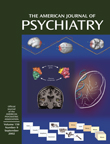Including both of these newly published books in a single review is appropriate, since in essence they represent the two-volume, expanded second edition of the first edition of Stroke Syndromes, published in 1995. Although envisioned by the editors as a complementary set, either volume can stand alone without compromise. The new Stroke Syndromes, designed to be a comprehensive guide to stroke patterns and syndromes for the non-stroke-specialist, is divided into two parts. The first section is organized into chapters by cerebrovascular symptom; the second part discusses strokes according to the involved vascular anatomy and brain structures. The material has been expanded considerably from the first two sections of the first edition, which covered the same general topics.
I think the practicing clinician who occasionally encounters patients with manifestations of cerebrovascular disease will be well served by Stroke Syndromes. The chapter authors are a remarkably international and distinguished group of stroke experts, reflecting the backgrounds of the editors themselves (one European, the other American). The illustrations in many of the chapters are outstanding. Students and residents will especially appreciate the large, clear illustrations of brain pathways, vascular territories, and vascular anatomy. Individual symptoms and syndromes are treated in great detail, and bibliographies are comprehensive and up-to-date. Of particular interest to mental health professionals, cognitive, psychiatric, and behavioral manifestations of cerebrovascular disease are well covered. Chapters discuss poststroke mood disturbances, delirium and agitation, and visual and auditory hallucinations in addition to the more “neurologic” behavioral phenomena such as neglect, agnosia, and dementia. Both the symptom-based and anatomy-based organization of the book and an extensive index make Stroke Syndromes a useful reference. I have used chapters from the first edition in conjunction with a series of “board review” lectures on cerebrovascular topics for neurology residents and anticipate that corresponding sections of the new edition will remain at least as useful.
As in any volume with multiple authors, a few of the chapters are not as clearly written as the majority. Although the organization by symptom and anatomy offers many advantages, certain topics are not as well served by this structure. For example, although brain images are incorporated into many of the chapters, there is no unified discussion of the neuroimaging of cerebrovascular disease or of the laboratory workup of stroke patients. Therapy and secondary prevention also are not conveniently incorporated into this framework. For these reasons, Stroke Syndromes will not replace other tomes as a comprehensive textbook on stroke; nor was this the editors’ intent. I also have some concern that the nonspecialist, finding a patient’s symptoms described in this comprehensive volume, may rush to the conclusion that they arise from a rare cerebrovascular condition rather than explore a more common, nonvascular cause. However, these are minor issues relative to the overall excellence of the book.
The new title, Uncommon Causes of Stroke, which replaces and expands on the final section of the first edition of Stroke Syndromes, will probably appeal more to the consultant neurologist or stroke specialist than the psychiatrist or generalist. The chapters do a commendable job of discussing less common conditions related to stroke, some only recently recognized. Sections describing stroke complications of nonneurologic systemic diseases are especially strong, although I was disappointed not to find a chapter on HIV-related cerebrovascular disease. Focusing on rare disorders that, when they occur, often produce stroke rather than on rare cerebrovascular complications of common medical conditions also skews the coverage somewhat. For example, whole chapters are devoted to uncommon genetic disorders such as CADASIL (cerebral autosomal dominant arteriopathy with subcortical infarcts and leukoencephalopathy) and the MELAS (mitochondrial myopathy, encephalopathy, lactic acidosis, and stroke) syndrome, whereas the rare (and slightly controversial) association of stroke with common conditions such as migraine headache or hormonal contraceptive therapy is barely mentioned. Still, Uncommon Causes of Stroke compares favorably with other reference works on this topic and will be a useful addition to the libraries of physicians in a referral cerebrovascular practice.

